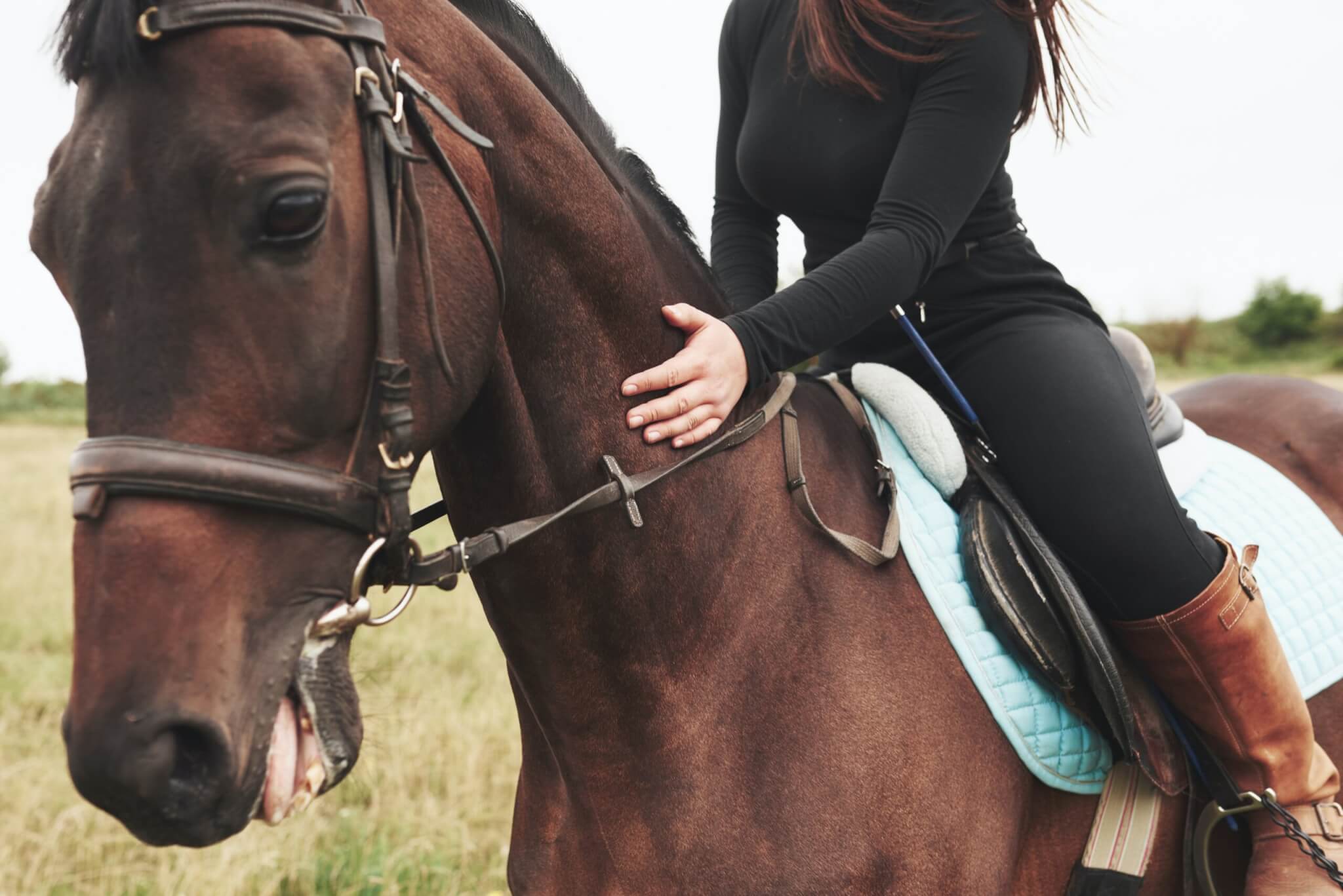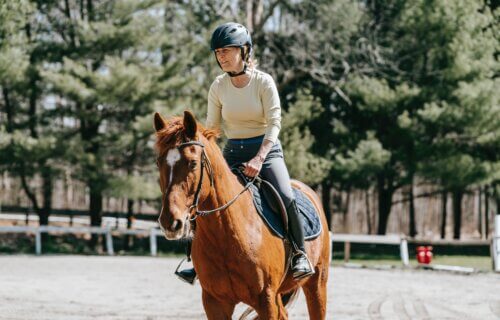KUOPIO, Finland — Lower back pain is incredibly common, especially among older adults. It’s estimated four in five people will experience lower back pain at some point in their lives. If your back has been bothering you lately, new research out of Finland suggests taking up horseback riding as a form of therapy may help ease the pain.
Patients with chronic low back pain may benefit from equine-facilitated therapy (EFT), according to the new study from the University of Eastern Finland. Over the course of a 12-week intervention perceptions of pain among horse-riding patients steadily declined, all while daily functioning abilities improved.
Researchers originally set out to gauge the impact of EFT on a number of outcomes: perceived physical performance, level of pain, pain acceptance, depression and anxiety, and quality of life. The research was conducted in Finland, and encompassed 22 men and women dealing with lower back pain.
The 12-week intervention indeed showed equine therapy can be useful for improving people’s daily functioning. Statistically significant improvement was seen across multiple health domains, such as sleep, reaching and bending forward, and standing for a long period of time.
As the exercise load gradually increased, patients’ pain levels decreased while their participation in social activities increased and psychological well-being improved. Next, during a six-month follow-up period, just two patients returned to the pain clinic.
During follow-up interviews many subjects stressed the perceived physical, psychological and social effects of EFT, demonstrating that the intervention can have a comprehensive, meaningful impact on pain rehabilitation efforts.

Equine therapy also good for the mind, too
Statistically significant quantitative improvement was also noted regarding mental health. During the intervention period, subjects’ social functioning improved and depression dropped. Something else was also highlighted during the interviews: “The created group effect was a positive experience.”
“Chronic back pain is a multidimensional experience involving not only physical pain but also learned thinking patterns and emotional reactions. Traditionally, physical therapy has been recommended for the rehabilitation of patients with chronic pain, as physical exercise has been found to be the most effective way to treat spinal pain. Hippocrates already recommended using equine movement as a form of physical and psychological rehabilitation for people, but the exact reason behind the rehabilitative effect has remained unknown thus far,” says Doctoral Researcher Sanna Mattila-Rautiainen of the University of Eastern Finland, in a statement..
Equine-facilitated therapy successfully delivered relief to chronic pain patients who had been incapable of work for several years.
“Patients with chronic pain tend to avoid the sensation of pain that comes from moving the affected part of their body. However, when sitting on a moving horse, a person with low back pain will end up moving to the gait of the horse, which encourages the right kind of lumbar movement,” Mattila-Rautiainen explains.
Researchers note that sitting on a horse to 100 walk-like movements per minute was found to be beneficial. “The movement felt good – the horse moved me correctly,” says one participant, while another adds: “There is no other way to exercise like this.”
Incorrect movement in everyday life promotes a vicious circle of pain among countless people, negatively impacting physical, psychological, and social well-being. When it comes to equine therapy, however, it’s important to note that the compatibility of the patient with the horse’s movements, along with a suitable exercise load, played a key role in this study’s intervention. Exercise loads were gradually increased, within the limits of patients’ pain thresholds. Patients’ opinions, meanwhile, were also noted regarding the choice of their horse and equipment.
The study is published in Frontiers in Veterinary Science.
